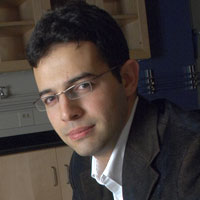Abstract: In recent years, the advantages of using small invertebrate animals as model systems for human diseases have become increasingly apparent, and have resulted in three Nobel Prizes in Medicine and Chemistry in 2002, 2006 and 2008 for the discoveries made using the nematode C. elegans. The availability of a wide array of genetic techniques, along with the animal's transparency, and its ability to grow in minute volumes make C. elegans an extremely versatile model organism. However, since the first studies in the early 1960s, little has changed in how this multi-cellular organism is physically manipulated. As a result, high-throughput in vivo studies could not be performed at cellular or sub-cellular resolution. We present key technologies for complex high-throughput whole-animal genetic and drug discoveries at sub-cellular resolution. We developed high-speed microfluidic sorters, which immobilize unanesthetized animals for high-throughput in vivo imaging and manipulation of sub-cellular features using femtosecond laser techniques. We show integrated chips with hundreds of addressable incubation chambers for exposure of individual animals to biochemical compounds and high-resolution time-lapse imaging of cellular features in vivo. We show devices for delivery of compound libraries in standard multi-well plates to microfluidic devices and also for rapid dispensing of screened animals into multi-well plates. These technologies allow various high-throughput in vivo assays on small-animals to be performed with sub-cellular resolution including mutagenesis, RNAi and compound screens. Using the femtosecond laser microsurgery technique we developed for high-throughput neuronal injury, we performed in vivo neuronal regeneration screens on tens of thousands of animals, and identified compounds and genetic targets that enhance regeneration significantly following injury.
Biography: Dr. Yanik received his BS and MS at MIT Engineering in 2000, and PhD as Stanford Applied Physics Fellow in 2006. He completed short postdoctoral work in Stanford Bioengineering and Neurosurgery. He is currently serving as faculty at MIT’s Department of Engineering. His work on high-throughput technologies, ultrafast optics, microfluidics, neuronal regeneration, coherent photonics is recognized by NIH Director’s Innovator Award, Packard Award in Engineering, Alfred Sloan Award in Neuroscience, NIH Eureka (Exceptional Unconventional Research Enabling Knowledge Acceleration) Award, Shillman Career Award, NSF Career Award, Silicon Valley Innovator's Challenge Award, Technology Review Magazine's "World’s top 35 innovators under age 35", Junior Chamber International’s "Outstanding Young Person", and Technology Research News Magazine's "Top ten advances of the year". His studies have been highlighted in ABC, The Economist, Scientific American, Nature, New Scientist, Biophotonics International, Genome Technology, and others.

